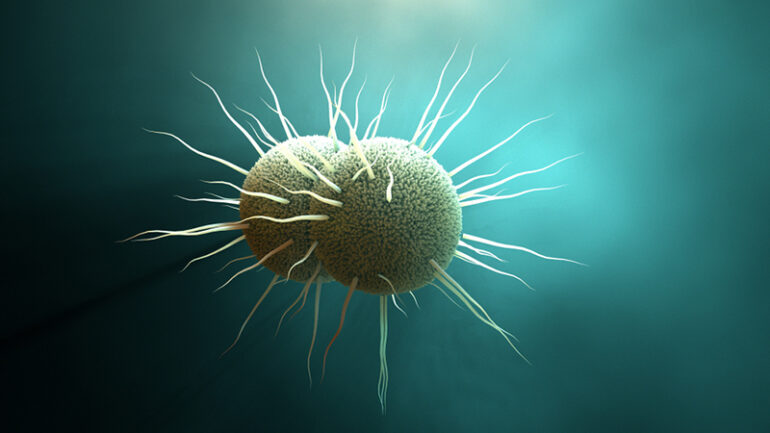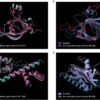Proteins on the surface of cells act as sentries—and microbes hoping to invade will evolve tricks to evade these front-line defenses. But the host cell’s proteins don’t sit back helplessly. They, too, can evolve in ways that makes it harder for microbes to get through.
In a new study, researchers in the lab of UO biologist Matt Barber look at a family of proteins found on the surface of epithelial cells. Epithelial cells line many surfaces in the body that are important for microbial interactions, like the inside of the mouth and nose as well as the digestive and reproductive tracts.
Even in closely related primates, those proteins have evolved into strikingly distinct versions that can block different kinds of bacteria, Barber and his team found. They report their findings Jan. 25 in the journal eLife.
“One of the coolest things is just how rapidly these proteins can change,” said postdoctoral researcher EmilyClare Baker.
This group of proteins, known as CEACAMs, is a particularly interesting case study because immune defense isn’t their primary job, Baker said.
“Immune cells interact with microbes all day long, but CEACAM proteins have a lot of other roles in the body,” she said, like helping cells stick together and supporting cell-to-cell communication.
But by virtue of their positioning, they’re also a first point of contact for many microbes. Bacteria target CEACAM proteins as a way to infect cells and colonize surfaces in the body.
“One of the broad goals in my lab is understanding how animals have evolved to defend themselves against pathogens,” Barber said. “We’ve thought a lot about how the dedicated immune system responds to pathogens, but the first step is making contact with a cell,” Barber said.
If CEACAM proteins change too much to skirt microbes, it could disrupt their other crucial non-immune-related functions.
Barber’s team surveyed CEACAM proteins across primates, comparing the genetic sequences of human CEACAM proteins with the versions of these proteins found in a variety of primates.
They found surprising variability in CEACAM proteins’ genetic sequences, even in closely related apes. That suggests the proteins are under pressure to evolve differently in response to different microbes they may have encountered in their different habitats, Barber suggests.
A closer look revealed that different CEACAM proteins had swapped genetic components, mixing up their sequences. Barber calls it “copy/paste evolution”; it’s a way that proteins can quickly make big evolutionary changes.
For example, one CEACAM protein found in bonobos had borrowed components of another kind of CEACAM protein to create a completely distinct protein.
The researchers also identified variants of human CEACAM proteins that had mutations making them resistant to the bacteria that cause gonorrhea. The find suggests that this gene-swapping is continually shaping diversity in human populations.
Next, Barber’s team plans to investigate other effects of the mutations. The changes could affect the proteins’ other roles in the body.
And genetic mutations that protect against gonorrhea or other, deadlier diseases might be beneficial in certain contexts, Barber said. But because so many different species of microbes interact with CEACAM proteins, those changes might also have consequences for microbial communities in the body more broadly.
More information:
Evolution of host-microbe cell adherence by receptor domain shuffling. eLife 2022; DOI: 10.7554/eLife.73330
Provided by
University of Oregon
Citation:
Primate proteins evolve to guard against pathogens, study finds (2022, February 4)



